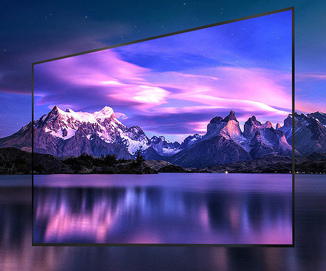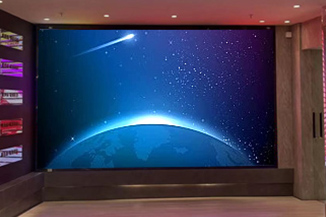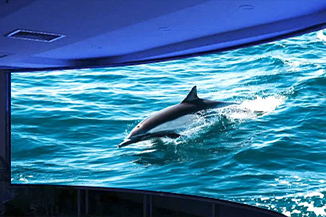Publisher: Supplier of LED Display Time: 2022-05-09 13:21 Views: 2043
What is the chromaticity processing technology of LED display? The chromaticity processing technology of LED display ranges from the most basic wavelength selection of primary colors, to the deployment of white point color temperature, to the color space conversion processing to improve the degree of color reproduction. And the chromaticity uniformity processing to improve the image quality, and the multi-primary color (greater than three-primary color) processing that we have adopted to expand the color gamut to reproduce more natural colors.
1. Selection of primary color wavelength
LED display screens are widely used in all walks of life, and different application places have different requirements for the wavelength of the primary color of the LED. habits, and some are industry standards, national standards or even international standards. For example, in the selection of the wavelength of the primary color of the green tube in the full-color LED display; in the early days, people generally chose a yellow-green LED with a wavelength of 570 nm. Although the cost is low, the color gamut of the display is small, the color reproduction is poor, and the brightness is low. After choosing a pure green tube with a wavelength of 525nm, the color gamut of the display is nearly doubled, and the color reproduction is greatly improved, which greatly improves the visual effect of the display.

2. Allocation of white field color coordinates
White field color coordinate allocation is one of the most basic technologies for full-color LED displays. However, in the mid-1990s, due to the lack of industry standards and basic testing methods, the color coordinates of the white field were usually determined only by the human eye and feeling, resulting in severe color cast and randomness of the color temperature of the white field. With the promulgation of industry standards and the completion of testing methods, many manufacturers began to standardize the color matching process of full-color screens. However, due to the lack of theoretical guidance on color matching, some manufacturers often sacrifice the gray level of some primary colors to allocate 100-field color coordinates, and the overall performance cannot be improved.
3. Chromaticity uniformity treatment
The problem of chromaticity uniformity of LED display screens has always been a major problem for people in the industry. It is generally believed that the uneven brightness of LEDs can be corrected by a single point to improve the brightness uniformity. The uneven chromaticity cannot be corrected, and can only be improved by subdividing and screening the LED color coordinates.
As people's requirements for LED displays are getting higher and higher, only subdivision and screening of LED color coordinates can no longer satisfy people's critical eyes. It is achievable to comprehensively correct the display to improve chromaticity uniformity. of.
The above is a detailed introduction to the processing technology of LED display chromaticity. If you have any doubts, please leave a message to consult LCF.









